 Lake Oroville Remains Full With temperatures remaining in the triple digits, Lake Oroville continues to remain at full capacity, offering ample water recreation and cooling opportunities for visitors. The Department of Water Resources (DWR) is adjusting water releases from the reservoir as needed to account for increasing or decreasing inflows while maintaining flood protection for downstream communities. Releases are closely coordinated with the U.S. Army Corps of Engineers and other water operators and adjusted as needed to maintain balance throughout the water system. DWR continues to monitor Lake Oroville levels to optimize water storage while meeting environmental requirements and allowing for carryover storage into next year. With Lake Oroville at full capacity, windy periods are likely to cause water to splash onto and over the crest of the emergency spillway. This will result in minor surface wetting of the downstream side of the emergency spillway crest and the very upper sections of the splash pad. Visitors to Oroville Dam may also notice minor amounts of water flowing from drains built into the emergency spillway. Both conditions are normal and expected given the emergency spillway design. The dam and emergency spillway continue to operate as intended. The information below reflects current reservoir level estimates. Forecasts can change quickly and may affect the estimates provided.
As the largest storage facility in the State Water Project, Lake Oroville helps provide water to 27 million Californians and 750,000 acres of farmland, while providing flood protection to downstream communities along with environmental and recreation benefits. Spring is an important time for water project operators to fill reservoirs like Lake Oroville ahead of dry months. It also is an important migration window for many native fish species. DWR is using the best available science to protect fish species. However, SWP operations have faced significant restrictions in the Delta this year that have impacted the ability in other areas of the state to capture and store the water needed if California sees a return to drought conditions.  MORE PRESCRIBED BURNS ANTICIPATED NEXT WEEK DWR, CAL FIRE/Butte County Fire Department, and the California Department of Parks and Recreation (State Parks) will continue prescribed burn activities near the Thermalito Afterbay and Forebay between Thursday, June 20 and Saturday, June 22. Approximately 120 acres will be burned near the Thermalito Afterbay between north Wilbur Road and Tres Vias Road. At the Thermalito Forebay, approximately 140 acres will be burned across three different locations – near Grand Avenue and the Thermalito South Forebay Recreation Area, and around the north Forebay area near Garden Drive and Nelson Park. CAL FIRE is using this controlled burn as a training mechanism for its employees. Fire personnel will utilize the burn to train on specific strategies and tactics associated with wildland fires and firing operations. The burns are part of DWR’s Thermalito Vegetation Management Project, which was established in 2021 to improve valley grassland and vernal pool habitat. They also have the added benefit of reducing dry brush near the Thermalito Forebay and Nelson Park in preparation for the City of Oroville’s Fourth of July fireworks showcase. Burn activities are dependent on favorable weather conditions with the schedule subject to change. Smoke from prescribed burning activities will be highly visible in the Oroville area next week. DWR, CAL FIRE, and the California Department of Fish and Wildlife (CDFW) previously completed a 100-acre prescribed burn along South Wilbur Road near the Afterbay to remove grasses and invasive vegetation. Annual grasses and other invasive species like the yellow starthistle degrade native grasslands and fire is a valuable tool to combat this degradation. Because invasive species have abundant seeds and dry material called thatch that build up on the soil, it is important to burn the same area multiple years in a row. When completed during the right stage in these species' growth cycle, the prescribed burns eradicate the current crop, reduce the dry residual thatch, and decrease the spread of seeds. The area has seen a significant decline in the volume of invasive grasses and starthistles since the project began. The burns also allow DWR to continue post-fire studies on vernal pool habitat. CALIFORNIA CLIMATE ADAPTATION STRATEGY The world’s leading climate scientists have made it clear - our window to avoid the worst impacts of climate change is narrowing faster than expected, and success requires unprecedented collective effort and transformational change. The California Natural Resources Agency (CNRA) recently released a draft of the 2024 update to the California Climate Adaptation Strategy and is seeking public feedback through July 12, 2024. The 2024 draft builds on the previously released 2021 Strategy and outlines the state's key climate resilience priorities, includes specific and measurable actions, and serves as a framework for collective efforts across California. CNRA is hosting a public workshop and community meeting on Tuesday, June 18 in Oroville to discuss the draft 2024 California Climate Adaptation Strategy and obtain feedback. Both meetings will be held at the Southside Oroville Community Center located at 2959 Lower Wyandotte Road, Oroville, CA. Food and refreshments will be provided at both sessions.
 OROVILLE RECREATION Staffed by knowledgeable guides, the Visitor Center features interpretive displays on Oroville Dam, area geology, wildlife and habitat, hydroelectric power, and cultural and historical artifacts. View videos in the theater about the construction of Oroville Dam, walk or hike along nearby trails, and visit the 47-foot-tall observation tower that provides unsurpassed panoramic views of surrounding areas. Free guided tours for school and community groups are available by reservation. Parking and admission to the Visitor Center are free. DWR, State Parks, and CDFW maintain over 92 miles of trails in the Oroville area. An interactive map of recreation facilities, including open trails and their permitted uses (hike, bike, horse, multi), is available on DWR’s Lake Oroville Recreation webpage. A paper trail map is available at various locations, including most entrance kiosks and the Lake Oroville Visitor Center. Lake Oroville is one of the State Water Project’s premier recreational destinations and one of California’s best fishing spots. The lake provides both warm-water and cold-water fisheries and is a popular destination for bass tournaments. Below the Oroville Dam, the Thermalito Afterbay and the Feather River offer additional excellent fishing opportunities. The marinas at Bidwell Canyon and Lime Saddle are open daily and provide a variety of services including a convenience store, gas, and boat rentals. Upstream migrating fish totals through the Feather River Fish Monitoring Station between January 1 and June 10 are:
CURRENT LAKE OPERATIONS Lake Oroville is at 898 feet elevation and storage is approximately 3.51 million acre-feet (MAF), which is 99 percent of its total capacity and 127 percent of the historical average. Feather River flows are at 850 cfs through the City of Oroville with 2,950 cfs being released from the Thermalito Afterbay River Outlet (Outlet) for a total Feather River release of 3,800 cfs downstream. DWR continues to assess Feather River releases daily. The public can track precipitation, snow, reservoir levels and more at the California Data Exchange Center. The Lake Oroville gage station is identified as “ORO.” All data as of midnight 6/13/2024.  Lake Oroville Remains Full With temperatures reaching triple digits this week, Lake Oroville continues to remain at full capacity, offering ample water recreation and cooling opportunities for visitors. The Department of Water Resources (DWR) is adjusting water releases from the reservoir as needed to account for increasing or decreasing inflows while maintaining flood protection for downstream communities. Releases are closely coordinated with the U.S. Army Corps of Engineers and other water operators and adjusted as needed to maintain balance throughout the water system. DWR continues to monitor Lake Oroville levels to optimize water storage while meeting environmental requirements and allowing for carryover storage into next year. With Lake Oroville at full capacity, windy periods are likely to cause water to splash onto and over the crest of the emergency spillway. This will result in minor surface wetting of the downstream side of the emergency spillway crest and the very upper sections of the splash pad. Visitors to Oroville Dam may also notice minor amounts of water flowing from drains built into the emergency spillway. Both conditions are normal and expected given the emergency spillway design. The dam and emergency spillway continue to operate as intended. The information below reflects current reservoir level estimates. Forecasts can change quickly and may affect the estimates provided.
As the largest storage facility in the State Water Project, Lake Oroville helps provide water to 27 million Californians and 750,000 acres of farmland, while providing flood protection to downstream communities along with environmental and recreation benefits. Spring is an important time for water project operators to fill reservoirs like Lake Oroville ahead of dry months. It also is an important migration window for many native fish species. DWR is using the best available science to protect fish species. However, SWP operations have faced significant restrictions in the Delta this year that have impacted the ability in other areas of the state to capture and store the water needed if California sees a return to drought conditions.  EXPLORE THE LIME SADDLE RECREATION AREA Just a short drive from the town of Paradise, the Lime Saddle Recreation Area is located along the western shoreline of the North Fork arm of Lake Oroville and accessible from Pentz Road. The boat ramp and day use area features picnic tables, sun shelters, ADA accessible flush toilets, a fish cleaning station, and trash receptacles. A five-lane boat ramp provides access to Lake Oroville with two lanes extending down to 702 feet for lower water access. At the top of the boat ramp, a parking lot provides ample vehicle and trailer parking with ADA designated spots. In addition, the Lime Saddle Marina offers supplies, gas for boats, and boat rentals so you can enjoy a day on the lake. Nearby campgrounds also offer close access to the lake and are perfect for quick dips to combat the scorching heat. Lime Saddle Campground features 50 total campsites – 44 individual (28 car/tent sites and 16 RV sites with full hookups) and six group campsites. Each campsite features a picnic table and fire ring with grill. Bathroom facilities offer flush toilets and showers for visitors. Further north, the Lime Saddle Group Campground features six group campsites with shade structures, multiple picnic tables, trash receptacles, a large barbecue, and a water fountain with spigot. Three of the group campsites at this facility are ADA accessible with the central restroom/shower building also offering ADA accommodation. With Lake Oroville at full capacity, it’s also the perfect time for a hiking or biking trip along the Lime Saddle Trail offering scenic views of the full reservoir. The 1.73-mile trail is accessible from Lime Saddle Recreation Road (marina access road) and routes visitors north before ending at the Lime Saddle Group Campground. DWR, the California Department of Parks and Recreation (State Parks), and the California Department of Fish and Wildlife (CDFW) maintain over 92 miles of trails in the Oroville area. An interactive map of recreation facilities, including open trails and their permitted uses (hike, bike, horse, multi), is available on DWR’s Lake Oroville Recreation webpage. A paper trail map is available at various locations, including most entrance kiosks and the Lake Oroville Visitor Center.  PRESCRIBED BURN COMPLETE AT THE AFTERBAY DWR, CAL FIRE/Butte County Fire Department, and CDFW completed a 100-acre prescribed burn along South Wilbur Road near the Afterbay on June 6. The burn is part of DWR’s Thermalito Vegetation Management Project, which was established in 2021 to improve valley grassland and vernal pool habitat. Invasive annual grasses and other invasive species like the yellow starthistle degrade native grasslands and fire is a valuable tool to combat this degradation. Because invasive species have abundant seeds and dry material called thatch that build up on the soil, it is important to burn the same area multiple years in a row. When completed during the right stage in these species' growth cycle, the prescribed burns eradicate the current crop, reduce the dry residual thatch, and decrease the spread of seeds. The area has seen a significant decline in the volume of invasive grasses and starthistles since the project began. The burns also allow DWR to continue post-fire studies on vernal pool habitat. Further prescribed burns around the Forebay and Afterbay are also planned for June 20 and June 21. Burn activities are dependent on favorable weather conditions with the schedule subject to change. The upcoming burns also have the added benefit of reducing dry brush near the Thermalito Forebay in preparation for the City of Oroville’s Fourth of July fireworks showcase. Smoke from prescribed burning activities will be highly visible in the Oroville area in the coming weeks.  OROVILLE RECREATION Lake Oroville is one of the State Water Project’s premier recreational destinations and one of California’s best fishing spots. The lake provides both warm-water and cold-water fisheries and is a popular destination for bass tournaments. Below the Oroville Dam, the Thermalito Afterbay and the Feather River offer additional excellent fishing opportunities. The marinas at Bidwell Canyon and Lime Saddle are open daily and provide a variety of services including a convenience store, gas, and boat rentals. Upstream migrating fish totals through the Feather River Fish Monitoring Station between January 1 and June 4 are:
CURRENT LAKE OPERATIONS Lake Oroville is at 899 feet elevation and storage is approximately 3.53 million acre-feet (MAF), which is 100 percent of its total capacity and 127 percent of the historical average. Feather River flows are at 850 cfs through the City of Oroville with 2,950 cfs being released from the Thermalito Afterbay River Outlet (Outlet) for a total Feather River release of 3,800 cfs downstream. DWR continues to assess Feather River releases daily. The public can track precipitation, snow, reservoir levels and more at the California Data Exchange Center. The Lake Oroville gage station is identified as “ORO.” All data as of midnight 6/6/2024.  DWR Maintaining Storage Capacity at Lake Oroville The Department of Water Resources (DWR) continues to maintain Lake Oroville at its peak storage capacity while adjusting water releases as needed to account for increasing or decreasing inflows into the reservoir and maintaining flood protection for downstream communities. Releases are closely coordinated with the U.S. Army Corps of Engineers and other water operators and adjusted as needed to maintain balance throughout the water system. DWR continues to monitor Lake Oroville levels to optimize water storage while meeting environmental requirements and allowing for carryover storage into next year. With Lake Oroville at full capacity, windy periods are likely to cause water to splash onto and over the crest of the emergency spillway. This will result in minor surface wetting of the downstream side of the emergency spillway crest and the very upper sections of the splash pad. Visitors to Oroville Dam may also notice minor amounts of water flowing from drains built into the emergency spillway. Both conditions are normal and expected given the emergency spillway design. The dam and emergency spillway continue to operate as intended. The information below reflects current reservoir level estimates. Forecasts can change quickly and may affect the estimates provided.
As the largest storage facility in the State Water Project, Lake Oroville helps provide water to 27 million Californians and 750,000 acres of farmland, while providing flood protection to downstream communities along with environmental and recreation benefits. Spring is an important time for water project operators to fill reservoirs like Lake Oroville ahead of dry months. It also is an important migration window for many native fish species. DWR is using the best available science to protect fish species. However, SWP operations have faced significant restrictions in the Delta this year that have impacted the ability to capture and store the water needed if California sees a return to drought conditions.  PRESCRIBED BURN SCHEDULED NEXT WEEK For the fourth straight year, DWR, CAL FIRE/Butte County Fire Department, and the California Department of Parks and Recreation (State Parks) will conduct a series of prescribed burns throughout the Thermalito Forebay and Thermalito Afterbay for vegetation management. The first prescribed burn is scheduled Wednesday, June 5 and will target approximately 100 acres along South Wilbur Road near the Afterbay. During the burn, a portion of Wilbur Road will be closed south of State Highway 162 due to low visibility and for the safety of fire crews. Further prescribed burns around the Forebay and Afterbay are also planned for June 20 and June 21. Burn activities are dependent on favorable weather conditions with the schedule subject to change. DWR’s Thermalito Vegetation Management Project was first conducted in 2021 to improve valley grassland and vernal pool habitat. Invasive annual grasses and other invasive species like the yellow starthistle degrade native grasslands and fire is a valuable tool to combat this degradation. Because invasive species have abundant seeds and dry material called thatch that build up on the soil, it is important to burn the same area multiple years in a row. When completed during the right stage in these species' growth cycle, the prescribed burns eradicate the current crop, reduce the dry residual thatch, and decrease the spread of seeds. The area has seen a significant decline in the volume of invasive grasses and starthistles since the project began. The burns also allow DWR to continue post-fire studies on vernal pool habitat. Upcoming prescribed burns also have the added benefit of reducing dry brush near the Thermalito Forebay in preparation for the City of Oroville’s Fourth of July fireworks showcase. Smoke from prescribed burning activities will be highly visible in the Oroville area in the coming weeks.  OROVILLE RECREATION DWR, State Parks, and the California Department of Fish and Wildlife (CDFW) maintain over 92 miles of trails in the Oroville area. An interactive map of recreation facilities, including open trails and their permitted uses (hike, bike, horse, multi), is available on DWR’s Lake Oroville Recreation webpage. A paper trail map is available at various locations, including most entrance kiosks and the Lake Oroville Visitor Center. Staffed by knowledgeable guides, the Visitor Center features interpretive displays on Oroville Dam, area geology, wildlife and habitat, hydroelectric power, and cultural and historical artifacts. View videos in the theater about the construction of Oroville Dam, walk or hike along nearby trails, and visit the 47-foot-tall observation tower that provides unsurpassed panoramic views of surrounding areas. Free guided tours for school and community groups are available by reservation. Parking and admission to the Visitor Center are free. Lake Oroville is one of the State Water Project’s premier recreational destinations and one of California’s best fishing spots. The lake provides both warm-water and cold-water fisheries and is a popular destination for bass tournaments. Below the Oroville Dam, the Thermalito Afterbay and the Feather River offer additional excellent fishing opportunities. The marinas at Bidwell Canyon and Lime Saddle are open daily and provide a variety of services including a convenience store, gas, and boat rentals. Upstream migrating fish totals through the Feather River Fish Monitoring Station between Jan. 1 and May 26 are:
CURRENT LAKE OPERATIONS Lake Oroville is at 899 feet elevation and storage is approximately 3.53 million acre-feet (MAF), which is 100 percent of its total capacity and 125 percent of the historical average. Feather River flows are at 650 cfs through the City of Oroville with 2,950 cfs being released from the Thermalito Afterbay River Outlet (Outlet) for a total Feather River release of 3,600 cfs downstream. DWR continues to assess Feather River releases daily. The public can track precipitation, snow, reservoir levels, and more at the California Data Exchange Center. The Lake Oroville gage station is identified as “ORO.” All data as of midnight 5/30/2024.  DWR Maintaining Storage Capacity at Lake Oroville The Department of Water Resources (DWR) continues to maintain Lake Oroville at its peak storage capacity while adjusting water releases as needed to account for increasing or decreasing inflows into the reservoir and maintaining flood protection for downstream communities. Releases are closely coordinated with the U.S. Army Corps of Engineers and other water operators and adjusted as needed to maintain balance throughout the water system. DWR continues to monitor Lake Oroville levels to optimize water storage while meeting environmental requirements and allowing for carryover storage into next year. With Lake Oroville at full capacity, windy periods are likely to cause water to splash onto and over the crest of the emergency spillway. This will result in minor surface wetting of the downstream side of the emergency spillway crest and the very upper sections of the splash pad. Visitors to Oroville Dam may also notice minor amounts of water flowing from drains built into the emergency spillway. Both conditions are normal and expected given the emergency spillway design. The dam and emergency spillway continue to operate as intended. The information below reflects current reservoir level estimates. Forecasts can change quickly and may affect the estimates provided.
As the largest storage facility in the State Water Project, Lake Oroville helps provide water to 27 million Californians and 750,000 acres of farmland, while providing flood protection to downstream communities along with environmental and recreation benefits. Spring is an important time for water project operators to fill reservoirs like Lake Oroville ahead of dry months. It also is an important migration window for many native fish species. DWR is using the best available science to protect fish species. However, SWP operations have faced significant restrictions in the Delta this year that have impacted the ability to capture and store the water needed if California sees a return to drought conditions.  SWIM BEACHES Temperatures are warming up in Northern California and summer is just around the corner. While Lake Oroville offers ample water opportunities for boating, kayaking or wakeboarding, the Lake Oroville State Recreation Area (LOSRA) and Oroville Wildlife Area (OWA) also offer several family-friendly swim beaches that are excellent locations to recreate. Swim beaches within the LOSRA and OWA provide shallow wading and swimming opportunities for visitors of all ages with nearby restroom facilities. Some locations also include picnic benches and barbecue facilities that are perfect for hosting a fun family gathering. Beat the heat and relax at one of our swim beaches – Loafer Creek at Lake Oroville, Monument Hill or Larkin Road at the Thermalito Afterbay, or the South or North Thermalito Forebay. When recreating at SWP facilities, you should always keep water safety a top priority. Keep these water safety tips in mind to have a fun and safe summer:
 DRIFTWOOD ABATEMENT ONGOING AT LAKE OROVILLE For the second year in a row, Lake Oroville has filled to capacity following a wet winter. But high water levels also bring driftwood and other floating debris as water flows into Lake Oroville from tributaries. Since the end of April, DWR civil maintenance staff have been collecting, containing, and pulling pieces of wood out of the lake and away from shoreline areas using boom lines. So far DWR civil maintenance crews have collected over an acre of driftwood with abatement activities expected to continue for the next several weeks. Crews are seeing much less floating debris this season due to lower inflows from tributaries coupled with extensive debris removal efforts in 2023. Floating debris removal ensures continued infrastructure operations and the safety of the recreating public on Lake Oroville. However, boaters, water skiers, and other water recreationists should take precautions when operating boats on Lake Oroville and should remain alert for floating debris.  OROVILLE RECREATION DWR, State Parks, and the California Department of Fish and Wildlife (CDFW) maintain over 92 miles of trails in the Oroville area. An interactive map of recreation facilities, including open trails and their permitted uses (hike, bike, horse, multi), is available on DWR’s Lake Oroville Recreation webpage. A paper trail map is available at various locations, including most entrance kiosks and the Lake Oroville Visitor Center. Staffed by knowledgeable guides, the Visitor Center features interpretive displays on Oroville Dam, area geology, wildlife and habitat, hydroelectric power, and cultural and historical artifacts. View videos in the theater about the construction of Oroville Dam, walk or hike along nearby trails, and visit the 47-foot-tall observation tower that provides unsurpassed panoramic views of surrounding areas. Free guided tours for school and community groups are available by reservation. Parking and admission to the Visitor Center are free. Lake Oroville is one of the State Water Project’s premier recreational destinations and one of California’s best fishing spots. The lake provides both warm-water and cold-water fisheries and is a popular destination for bass tournaments. Below the Oroville Dam, the Thermalito Afterbay and the Feather River offer additional excellent fishing opportunities. The marinas at Bidwell Canyon and Lime Saddle are open daily and provide a variety of services including a convenience store, gas, and boat rentals. Upstream migrating fish totals through the Feather River Fish Monitoring Station between Jan. 1 and May 19 are:
CURRENT LAKE OPERATIONS Lake Oroville is at 898 feet elevation and storage is approximately 3.52 million acre-feet (MAF), which is 99 percent of its total capacity and 126 percent of the historical average. Feather River flows are at 650 cfs through the City of Oroville with 1,650 cfs being released from the Thermalito Afterbay River Outlet (Outlet) for a total Feather River release of 2,300 cfs downstream. Total Feather River releases may be further reduced over the weekend. DWR continues to assess Feather River releases daily. The public can track precipitation, snow, reservoir levels, and more at the California Data Exchange Center. The Lake Oroville gage station is identified as “ORO.” All data as of midnight 5/23/2024.  Lake Oroville Reaches Full Capacity Two Years in a Row While the new water year began with warm and dry conditions, the Feather River watershed received enough precipitation and snowpack runoff in the first months of 2024 to fill Lake Oroville to capacity for the second year in a row. The Department of Water Resources (DWR) continues to adjust Lake Oroville water releases as needed to account for increasing or decreasing inflows into the reservoir and maintain flood protection for downstream communities. Releases are closely coordinated with the U.S. Army Corps of Engineers and other water operators and adjusted as needed to maintain balance throughout the water system. With Lake Oroville at full capacity, windy periods are likely to cause water to splash onto and over the crest of the emergency spillway. This will result in minor surface wetting of the downstream side of the emergency spillway crest and the very upper sections of the splash pad. Visitors to Oroville Dam may also notice minor amounts of water flowing from drains built into the emergency spillway. Both conditions are normal and expected given the emergency spillway design. The dam and emergency spillway continue to operate as intended. The information below reflects current reservoir level estimates. Forecasts can change quickly and may affect the estimates provided.
As the largest storage facility in the State Water Project, Lake Oroville helps provide water to 27 million Californians and 750,000 acres of farmland, while providing flood protection to downstream communities along with environmental and recreation benefits. Spring is an important time for water project operators to fill reservoirs like Lake Oroville ahead of dry months. It also is an important migration window for many native fish species. DWR is using the best available science to protect fish species. However, SWP operations have faced significant restrictions in the Delta this year that have impacted the ability to capture and store the water needed if California sees a return to drought conditions. DWR continues to monitor Lake Oroville levels and mountain snow levels to optimize water storage while meeting environmental requirements and allowing for carryover storage into next year.  DRIFTWOOD ABATEMENT ONGOING AT LAKE OROVILLE For the second year in a row, Lake Oroville has filled to capacity following a wet winter. But high water levels also bring driftwood and other floating debris as water flows into Lake Oroville from tributaries. Since the end of April, DWR civil maintenance staff have been collecting, containing, and pulling pieces of wood out of the lake and away from shoreline areas using boom lines. So far DWR civil maintenance crews have collected over an acre of driftwood with abatement activities expected to continue for the next several weeks. Crews are seeing much less floating debris this season due to lower inflows from tributaries coupled with extensive debris removal efforts in 2023. Floating debris removal ensures continued infrastructure operations and the safety of the recreating public on Lake Oroville. However, boaters, water skiers, and other water recreationists should take precautions when operating boats on Lake Oroville and should remain alert for floating debris. The State Water Project’s (SWP) reservoirs located throughout California will again welcome the upcoming summer months with high water levels. Storms this past winter will also bring fast flows and cold temperatures to rivers and streams as mountain snow melts. When recreating at SWP facilities, you should always keep water safety a top priority and stay alert for cold, fast, and fluctuating water conditions. As part of Water Safety Month, keep these water safety tips in mind to have a fun and safe summer:
 GOLD FLAT LOOP CAMPGROUND REOPENS The California Department of Parks and Recreation (State Parks) has reopened the Bidwell Canyon Gold Flat Loop Campground at the Lake Oroville State Recreation Area following extensive ADA site upgrades. In addition to repaving campground access roads, three of the 37 tent/RV camping sites received accessibility upgrades with parking stalls and a clear path of travel to accessible restroom and shower facilities. Upgrades to the campground also included new water and sewer facilities to complement new power hookups that were completed in recent years. The Gold Flat Loop Campground is conveniently located near the popular Bidwell Canyon Marina and provides nearby access to the Bidwell Canyon Trail (hiking/biking) and the Dan Beebe Trail (hiking/equestrian). With Lake Oroville at full capacity, now is the perfect time to reserve a campsite and enjoy the numerous recreation opportunities available at Lake Oroville. Book your Lake Oroville stay at reservecalifornia.com.  OROVILLE RECREATION DWR, State Parks, and the California Department of Fish and Wildlife (CDFW) maintain over 92 miles of trails in the Oroville area. An interactive map of recreation facilities, including open trails and their permitted uses (hike, bike, horse, multi), is available on DWR’s Lake Oroville Recreation webpage. A paper trail map is available at various locations, including most entrance kiosks and the Lake Oroville Visitor Center. Staffed by knowledgeable guides, the Visitor Center features interpretive displays on Oroville Dam, area geology, wildlife and habitat, hydroelectric power, and cultural and historical artifacts. View videos in the theater about the construction of Oroville Dam, walk or hike along nearby trails, and visit the 47-foot-tall observation tower that provides unsurpassed panoramic views of surrounding areas. Free guided tours for school and community groups are available by reservation. Parking and admission to the Visitor Center are free. Lake Oroville is one of the State Water Project’s premier recreational destinations and one of California’s best fishing spots. The lake provides both warm-water and cold-water fisheries and is a popular destination for bass tournaments. Below the Oroville Dam, the Thermalito Afterbay and the Feather River offer additional excellent fishing opportunities. The marinas at Bidwell Canyon and Lime Saddle are open daily and provide a variety of services including a convenience store, gas, and boat rentals. Upstream migrating fish totals through the Feather River Fish Monitoring Station between Jan. 1 and May 14 are:
CURRENT LAKE OPERATIONS Lake Oroville is at 899 feet elevation and storage is approximately 3.52 million acre-feet (MAF), which is 100 percent of its total capacity and 127 percent of the historical average. Feather River flows are at 1,100 cfs through the City of Oroville with 5,850 cfs being released from the Thermalito Afterbay River Outlet (Outlet) for a total Feather River release of 6,950 cfs downstream. DWR continues to assess Feather River releases daily. The public can track precipitation, snow, reservoir levels, and more at the California Data Exchange Center. The Lake Oroville gage station is identified as “ORO.” All data as of midnight 5/16/2024.  Lake Oroville Reaches Full Capacity Two Years in a Row While the new water year began with warm and dry conditions, the Feather River watershed received enough precipitation and snowpack runoff in the first months of 2024 to fill Lake Oroville to capacity for the second year in a row. The Department of Water Resources (DWR) continues to adjust Lake Oroville water releases as needed to account for increasing or decreasing inflows into the reservoir and maintain flood protection for downstream communities. Releases are closely coordinated with the U.S. Army Corps of Engineers and other water operators and adjusted as needed to maintain balance throughout the water system. With Lake Oroville at full capacity, windy periods are likely to cause water to splash onto and over the crest of the emergency spillway. This will result in minor surface wetting of the downstream side of the emergency spillway crest and the very upper sections of the splash pad. Visitors to Oroville Dam may also notice minor amounts of water flowing from drains built into the emergency spillway. Both conditions are normal and expected given the emergency spillway design. The dam and emergency spillway continue to operate as intended. The information below reflects current reservoir level estimates. Forecasts can change quickly and may affect the estimates provided.
Total releases to the Feather River amount to 9,500 cfs with 650 cfs being routed down the Low Flow Channel through the City of Oroville. An additional 8,850 cfs is being released from the Thermalito Afterbay River Outlet, located 5 miles downstream from Oroville. Feather River releases will be incrementally reduced to 8,500 cfs by Monday, May 13. DWR continues to assess Feather River releases daily. As the largest storage facility in the State Water Project, Lake Oroville helps provide water to 27 million Californians and 750,000 acres of farmland, while providing flood protection to downstream communities along with environmental and recreation benefits. Spring is an important time for water project operators to fill reservoirs like Lake Oroville ahead of dry months. It also is an important migration window for many native fish species. DWR is using the best available science to protect fish species. However, SWP operations have faced significant restrictions in the Delta this year that have impacted the ability to capture and store the water needed if California sees a return to drought conditions. DWR continues to monitor Lake Oroville levels and mountain snow levels to optimize water storage while meeting environmental requirements and allowing for carryover storage into next year.  Feather Falls A popular excursion at Lake Oroville during high-water level periods is to take a boat trip to the upper end of the Middle Fork Arm to view Feather Falls, a Yosemite-style waterfall of exquisite beauty. Along the way, there are many smaller waterfalls to see including some that tumble directly into Lake Oroville such as Bean Creek and Frey Creek. Bring a picnic lunch, a camera, and don’t forget your fishing pole. There are unlimited bass fishing opportunities along the route and trout fishing can also be good in areas where cold mountain streams enter the lake.  Gold Flat Loop Campground Reopens The California Department of Parks and Recreation (State Parks) has reopened the Bidwell Canyon Gold Flat Loop Campground at the Lake Oroville State Recreation Area following extensive ADA site upgrades. In addition to repaving campground access roads, three of the 37 tent/RV camping sites received accessibility upgrades with parking stalls and a clear path of travel to accessible restroom and shower facilities. Upgrades to the campground also included new water and sewer facilities to complement new power hookups that were completed in recent years. The Gold Flat Loop Campground is conveniently located near the popular Bidwell Canyon Marina and provides nearby access to the Bidwell Canyon Trail (hiking/biking) and the Dan Beebe Trail (hiking/equestrian). With Lake Oroville at full capacity, now is the perfect time to reserve a campsite and enjoy the numerous recreation opportunities available at Lake Oroville. Book your Lake Oroville stay at reservecalifornia.com.  Oroville Recreation Staffed by knowledgeable guides, the Visitor Center features interpretive displays on Oroville Dam, area geology, wildlife and habitat, hydroelectric power, and cultural and historical artifacts. View videos in the theater about the construction of Oroville Dam, walk or hike along nearby trails, and visit the 47-foot-tall observation tower that provides unsurpassed panoramic views of surrounding areas. Free guided tours for school and community groups are available by reservation. Parking and admission to the Visitor Center are free. DWR, State Parks, and the California Department of Fish and Wildlife (CDFW) maintain over 92 miles of trails in the Oroville area. An interactive map of recreation facilities, including open trails and their permitted uses (hike, bike, horse, multi), is available on DWR’s Lake Oroville Recreation webpage. A paper trail map is available at various locations, including most entrance kiosks and the Lake Oroville Visitor Center. Lake Oroville is one of the State Water Project’s premier recreational destinations and one of California’s best fishing spots. The lake provides both warm-water and cold-water fisheries and is a popular destination for bass tournaments. Below the Oroville Dam, the Thermalito Afterbay and the Feather River offer additional excellent fishing opportunities. The marinas at Bidwell Canyon and Lime Saddle are open daily and provide a variety of services including a convenience store, gas, and boat rentals. Upstream migrating fish totals through the Feather River Fish Monitoring Station between Jan. 1 and May 5 are:
Current Lake OperationsLake Oroville is at 899 feet elevation and storage is approximately 3.52 million acre-feet (MAF), which is 100 percent of its total capacity and 128 percent of the historical average. Feather River flows are at 650 cfs through the City of Oroville with 8,850 cfs being released from the Thermalito Afterbay River Outlet (Outlet) for a total Feather River release of 9,500 cfs downstream. Feather River releases will be incrementally reduced to 8,500 cfs by Monday, May 13. DWR continues to assess Feather River releases daily. The public can track precipitation, snow, reservoir levels, and more at the California Data Exchange Center. The Lake Oroville gage station is identified as “ORO.” All data as of midnight 5/9/2024. Know someone who would like to receive Community Updates? They can email their request to [email protected].  Storage Increasing at Lake Oroville During the winter and early spring months, flood control releases from Oroville Dam ensure the safety of the City of Oroville and downstream communities by reserving storage space to capture high storm inflows while permitting controlled and coordinated releases from the dam. As the warm, summer months approach and rain and snowstorms driven by atmospheric rivers wane, the Department of Water Resources (DWR) transitions from performing flood control releases at Oroville Dam to capturing as much water in the reservoir as possible, while still meeting water delivery and environmental requirements. Throughout April, DWR decreased total releases from Lake Oroville to account for reduced inflows into the reservoir, while optimizing storage for the benefit of water supply, recreation, and fish and wildlife enhancement. DWR coordinates releases closely with the U.S. Army Corps of Engineers and other water operators and adjusts releases as needed to maintain balance throughout the water system. As Lake Oroville approaches full capacity there is the potential for some waves to splash over the crest of the emergency spillway if we experience any particularly windy days. Visitors to Oroville Dam may also notice minor amounts of water flowing from drains built into the emergency spillway, which is normal and expected with the emergency spillway design. The dam and emergency spillway continue to operate as intended. The information below reflects current reservoir level estimates. Forecasts can change quickly and may affect the estimates provided.
Total releases to the Feather River amount to 5,500 cfs with 650 cfs being routed down the Low Flow Channel through the City of Oroville. An additional 4,850 cfs is being released from the Thermalito Afterbay River Outlet, located 5 miles downstream from Oroville. Total Feather River releases may be increased over the weekend to account for higher reservoir inflows from weekend precipitation. DWR continues to assess Feather River releases daily. Lake Oroville is the largest storage facility in the State Water Project, providing flood protection while supporting environmental and water delivery needs to 27 million Californians. DWR continues to monitor lake levels and mountain snow levels to optimize water storage while meeting environmental requirements and allowing for carryover storage into next year.  Blue-Green Algae Monitoring DWR’s environmental scientists began monitoring for blue-green algae and their toxins last week within the Oroville-Thermalito Complex and at Davis, Frenchman, and Antelope Lakes (Upper Feather River lakes). Monitoring occurs during the summer months with water samples taken at various locations regularly, which are sent to a lab for toxin analysis. There are currently no harmful algal bloom (HAB) advisories for Lake Oroville, Upper Feather River lakes, the Thermalito Forebay, or the Thermalito Afterbay. Blue-green algae (cyanobacteria) is a natural component of ecosystems. Under certain conditions, including warmer temperatures and increased nutrient loads, algae can grow rapidly causing “blooms.” Algal blooms sometimes produce toxins that can be harmful to people and animals. Algal blooms can make the water appear green, blue, or brown in color. Seeing colors, mats, foam, scum, or paint-like streaks in the water may indicate a bloom is present. Keep animals and children away from the water when a suspected bloom is present and report blooms immediately to the California Regional Water Quality Control Board. If elevated levels of cyanobacteria toxins are found while testing, DWR staff will work with California’s Regional Water Quality Control Board and recreation area managers to notify the public and post advisory signs at affected waterbodies. To learn more about HABs, or to report a HAB visit the Water Board’s website. Oroville Recreation Advisory Committee The Oroville Recreation Advisory Committee (ORAC) met May 3 at the Southside Oroville Community Center. ORAC was established by the Federal Energy Regulatory Commission (FERC) to review and provide recreation plan recommendations to DWR for the Oroville Facilities. The 13-member committee is made up of representatives from state and local government, recreation groups, and business and community organizations. To obtain a summary of the meeting, send a request to [email protected].  Feather Fiesta Days For more than 70 years, Feather Fiesta Days has been Oroville’s premier hometown celebration. Festivities are scheduled this weekend Friday, May 3 through Sunday, May 5 with a large variety of activities. Get the party started today with the Gold Rush Car Show, Kiwanis Kiddies Day Parade, and Feather River Recreation & Park District's Concert in the Park. Then head to downtown Oroville on Saturday for a pancake breakfast, Feather Fiesta Days Parade, craft fair, and vendor and food booths. Stop by DWR’s booth in downtown Oroville between 10 a.m. and 4 p.m. on Saturday. We’ll be sharing information about Lake Oroville recreation areas and have a fun drawing activity. Decorate our banner with sayings or drawings that represent what you love about the Feather River. We’ll be displaying your beautiful banner artwork at the Lake Oroville Visitor Center for the next few weeks. Learn more about scheduled Feather Fiesta Days activities at visitoroville.com. Extended Hours for Spillway Day-Use Area With the approaching summer months and extended daylight hours, the Spillway Boat Ramp and Day Use Area are now open from 5 a.m. to 11 p.m. All vehicles and trailers are subject to inspection by the California Highway Patrol (CHP) for security purposes. There are five other boat ramps at Lake Oroville that are open 24 hours a day and do not entail CHP inspections: Bidwell Canyon, Loafer Point, Loafer Creek, Lime Saddle, and Enterprise.  Oroville Recreation Staffed by knowledgeable guides, the Visitor Center features interpretive displays on Oroville Dam, area geology, wildlife and habitat, hydroelectric power, and cultural and historical artifacts. View videos in the theater about the construction of Oroville Dam, walk or hike along nearby trails, and visit the 47-foot-tall observation tower that provides unsurpassed panoramic views of surrounding areas. Free guided tours for school and community groups are available by reservation. Parking and admission to the Visitor Center are free. DWR, State Parks, and CDFW maintain over 92 miles of trails in the Oroville area. An interactive map of recreation facilities, including open trails and their permitted uses (hike, bike, horse, multi), is available on DWR’s Lake Oroville Recreation webpage. A paper trail map is available at various locations, including most entrance kiosks and the Lake Oroville Visitor Center. Lake Oroville is one of the State Water Project’s premier recreational destinations and one of California’s best fishing spots. The lake provides both warm-water and cold-water fisheries and is a popular destination for bass tournaments. Below the Oroville Dam, the Thermalito Afterbay and the Feather River offer additional excellent fishing opportunities. The marinas at Bidwell Canyon and Lime Saddle are open daily and provide a variety of services including a convenience store, gas, and boat rentals. Upstream migrating fish totals through the Feather River Fish Monitoring Station between Jan. 1 and April 28 are:
Current Lake OperationsLake Oroville is at 897 feet elevation and storage is approximately 3.49 million acre-feet (MAF), which is 99 percent of its total capacity and 127 percent of the historical average. Feather River flows are at 650 cfs through the City of Oroville with 3,350 cfs being released from the Thermalito Afterbay River Outlet (Outlet) for a total Feather River release of 4,000 cfs downstream. Total Feather River releases may be increased over the weekend to account for higher reservoir inflows from weekend precipitation. DWR continues to assess Feather River releases daily. The public can track precipitation, snow, reservoir levels, and more at the California Data Exchange Center. The Lake Oroville gage station is identified as “ORO.” All data as of midnight 5/2/2024. Know someone who would like to receive Community Updates? They can email their request to [email protected].  Storage Increasing at Lake Oroville During the winter and early spring months, flood control releases from Oroville Dam ensure the safety of the City of Oroville and downstream communities by reserving storage space to capture high storm inflows while permitting controlled and coordinated releases from the dam. As the warm, summer months approach and rain and snowstorms driven by atmospheric rivers wane, the Department of Water Resources (DWR) transitions from performing flood control releases at Oroville Dam to capturing as much water in the reservoir as possible, while still meeting water delivery and environmental requirements. Throughout April, DWR has decreased total releases from Lake Oroville to account for reduced inflows into the reservoir, while optimizing storage for the benefit of water supply, recreation, and fish and wildlife enhancement. DWR coordinates releases closely with the U.S. Army Corps of Engineers and other water operators and adjusts releases as needed to maintain balance throughout the water system. The information below reflects current reservoir level estimates. Forecasts can change quickly and may affect the estimates provided.
Total releases to the Feather River amount to 4,000 cfs with 650 cfs being routed down the Low Flow Channel through the City of Oroville. An additional 3,350 cfs is being released from the Thermalito Afterbay River Outlet, located 5 miles downstream from Oroville. Total Feather River releases may be increased over the weekend to meet downstream water quality requirements. DWR continues to assess Feather River releases daily. Lake Oroville is the largest storage facility in the State Water Project, providing flood protection while supporting environmental and water delivery needs to 27 million Californians. DWR continues to monitor lake levels and mountain snow levels to optimize water storage while meeting environmental requirements and allowing for carryover storage into next year.  DWR Supports New Well for Berry Creek School Destroyed by Fire Almost four years ago, the community of Berry Creek was destroyed by the North Complex Fire leaving just a few homes standing and the local elementary school burned to the ground. Thanks to funding provided in 2022 by DWR's Small Community Drought Relief Program, construction is underway to drill a new well and install a water system to support students when they return to school in the future. Learn more about how DWR is helping the Berry Creek community: https://youtu.be/Th_e9rkmRr0 Extended Hours for Spillway Day-Use Area With the approaching summer months and extended daylight hours, the Spillway Boat Ramp and Day Use Area will be open from 5 a.m. to 11 p.m. starting Wednesday, May 1. All vehicles and trailers are subject to inspection by the California Highway Patrol (CHP) for security purposes. There are five other boat ramps at Lake Oroville that are open 24 hours a day and do not entail CHP inspections: Bidwell Canyon, Loafer Point, Loafer Creek, Lime Saddle, and Enterprise. Oroville Recreation Advisory Committee The Oroville Recreation Advisory Committee (ORAC) will hold a meeting on Friday, May 3 at 10 a.m. at the Southside Oroville Community Center located at 2959 Lower Wyandotte Road, Oroville, CA, 95966. ORAC was established by the Federal Energy Regulatory Commission (FERC) to review and provide recreation plan recommendations for Oroville Facilities owned by the Department of Water Resources (DWR). The 13-member committee is made up of representatives from state and local government, recreation groups, and business and community organizations.  Feather Fiesta Days For more than 70 years, Feather Fiesta Days has been Oroville’s premier hometown celebration. This year, festivities will be held Friday, May 3 through Sunday, May 5 with a large variety of activities. Get the party started on Friday with the Gold Rush Car Show, Kiwanis Kiddies Day Parade, and Feather River Recreation & Park District's Concert in the Park. Then head to downtown Oroville on Saturday for a pancake breakfast, Feather Fiesta Days Parade, craft fair, and vendor and food booths. Stop by DWR’s booth in downtown Oroville between 10 a.m. and 4 p.m. on Saturday. We’ll be sharing information about Lake Oroville recreation areas and have a fun drawing activity. Decorate our banner with sayings or drawings that represent what you love about the Feather River. We’ll be displaying your beautiful banner artwork at the Lake Oroville Visitor Center for the next few weeks. Learn more about scheduled Feather Fiesta Days activities at visitoroville.com.  Oroville Recreation DWR, State Parks, and CDFW maintain over 92 miles of trails in the Oroville area. An interactive map of recreation facilities, including open trails and their permitted uses (hike, bike, horse, multi), is available on DWR’s Lake Oroville Recreation webpage. A paper trail map is available at various locations, including most entrance kiosks and the Lake Oroville Visitor Center. Staffed by knowledgeable guides, the Visitor Center features interpretive displays on Oroville Dam, area geology, wildlife and habitat, hydroelectric power, and cultural and historical artifacts. View videos in the theater about the construction of Oroville Dam, walk or hike along nearby trails, and visit the 47-foot-tall observation tower that provides unsurpassed panoramic views of surrounding areas. Free guided tours for school and community groups are available by reservation. Parking and admission to the Visitor Center are free. Lake Oroville is one of the State Water Project’s premier recreational destinations and one of California’s best fishing spots. The lake provides both warm-water and cold-water fisheries and is a popular destination for bass tournaments. Below the Oroville Dam, the Thermalito Afterbay and the Feather River offer additional excellent fishing opportunities. The marinas at Bidwell Canyon and Lime Saddle are open daily and provide a variety of services including a convenience store, gas, and boat rentals. Upstream migrating fish totals through the Feather River Fish Monitoring Station between Jan. 1 and April 20 are:
Current Lake OperationsLake Oroville is at 889 feet elevation and storage is approximately 3.37 million acre-feet (MAF), which is 95 percent of its total capacity and 125 percent of the historical average. Feather River flows are at 650 cfs through the City of Oroville with 3,350 cfs being released from the Thermalito Afterbay River Outlet (Outlet) for a total Feather River release of 4,000 cfs downstream. Total Feather River releases may be increased over the weekend to meet downstream water quality requirements. DWR continues to assess Feather River releases daily. Visitors to Oroville Dam may also notice minor amounts of water flowing from drains built into the emergency spillway, which is normal and expected with the emergency spillway design. The dam and emergency spillway continue to operate as intended. The public can track precipitation, snow, reservoir levels, and more at the California Data Exchange Center. The Lake Oroville gage station is identified as “ORO.” All data as of midnight 4/25/2024. Know someone who would like to receive Community Updates? They can email their request to [email protected]. 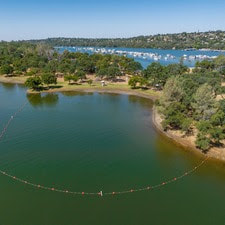 Feather River Pulse Flow to Benefit Migrating Fish With warming temperatures and the mountain snowmelt season underway, the Department of Water Resources (DWR) continues to perform required flood protection releases from Lake Oroville using the Hyatt Powerplant. Releases from Lake Oroville during the spring months help maintain storage capacity in the reservoir to capture runoff, while optimizing storage for the benefit of water supply, recreation, and fish and wildlife enhancement. Over the past week, DWR has further decreased total releases from Lake Oroville to account for reduced inflows into the reservoir. DWR coordinates releases closely with the U.S. Army Corps of Engineers and other water operators and adjusts releases as needed to maintain balance throughout the water system. The information below reflects current reservoir level estimates. Forecasts can change quickly and may affect the estimates provided.
Reductions are in anticipation of a pulse flow, a temporary increase in river flow, which is scheduled to start Tuesday, April 23. Pulse flows benefit migrating fish such as juvenile salmon and steelhead, that are traveling downstream this time of year. Pulse flows increase their survival by increasing the speed at which juvenile salmon and steelhead move downstream, reducing their exposure to predators and potential infection from pathogens. Pulse flows during the winter and spring mimic natural river hydrologic conditions that the salmon and steelhead, along with many other Central Valley riverine species, have adapted to over many eons. Pulse flows were developed in coordination with the California Department of Fish and Wildlife (CDFW) and National Marine Fisheries Service (NMFS) for the benefit of salmon migrating out of the Feather River. During the pulse flow period, the Low Flow Channel will remain at 650 cfs, while total Feather River releases will increase to 6,450 cfs. It is expected that flows will be reduced again by Saturday, April 27. Lake Oroville is the largest storage facility in the State Water Project, providing flood protection while supporting environmental and water delivery needs to 27 million Californians. DWR continues to monitor lake levels, weather forecasts, and mountain snow levels to optimize water storage while meeting environmental requirements and allowing for carryover storage into next year. 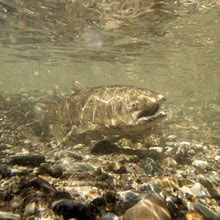 Oroville Wildlife Area Plantings Support Native and Migratory Birds The nearly 12,000-acre Oroville Wildlife Area (OWA) in Butte County is a popular stopping place on the Pacific Flyway for migrating and native birds thanks to its preservation as a wildlife habitat and its proximity to the Thermalito Afterbay and Feather River. Under the management of CDFW, nearly 300 acres of grains, grasses, and flowering plants are sown yearly to provide food (forage), shelter, and nesting cover for migratory and native birds. This spring, CDFW has begun the planting season with 60 acres of sunflower and safflower seeds at 16 different locations around the Thermalito Afterbay. Growing different types of grains, grasses, and flowers provides nutrition for different varieties of birds and wildlife, and safflower and black oil sunflower seeds provide the most energy per pound of any typical birdseed. Both safflowers and sunflowers thrive best in arid climates and dry conditions like those found in the north Sacramento Valley where the OWA is located. However, planting at the OWA does present a challenge due to a lack of an irrigation system. CDFW staff instead utilize dry-land farming techniques including minimal land tilling, wider than normal spacing, and the selection of crops best suited for the environment. CDFW staff have been planting forage in the OWA for over 50 years and have a successful track record of timing the weather with their plowing and seeding activities to provide a welcome bounty of high-energy food and shelter for the Valley’s native birds and migrating visitors. 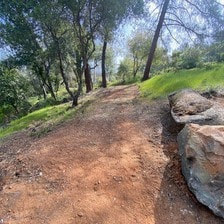 Brad Freeman Trail Reroute Heavy rains caused slope failure along a portion of the Brad Freeman Trail near the Hyatt Powerplant, making a quarter mile long trail section unsafe for public recreation. DWR and the California Department of Parks and Recreation (State Parks) assessed impacts to the trail with a decision ultimately made to reroute the trail for continued recreation use. DWR and State Parks opened the newly rerouted trail this week, which now runs along the north side of Oro Powerhouse Road. The trail reroute provides continuous access to the 41-mile-long Brad Freeman Trail loop, offering multi-use recreation for hiking, biking, and equestrians. The nearest access points to this trail segment are the Diversion Pool parking lot off Oro Powerhouse Road and the Upper Overlook Day Use Area on Canyon Drive. DWR, State Parks, and CDFW maintain over 92 miles of trails in the Oroville area. An interactive map of recreation facilities, including open trails and their permitted uses (hike, bike, horse, multi), is available on DWR’s Lake Oroville Recreation webpage. A paper trail map is available at various locations, including most entrance kiosks and the Lake Oroville Visitor Center. 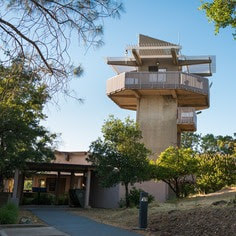 Earth Day Activities Celebrate Earth Day with DWR and the Lake Oroville Visitor Center. Our Visitor Center guides are hosting an Earth Day chalk art event this Saturday, April 20 from 10 a.m. to 3 p.m. Join our staff in creating beautiful chalk art showcasing your love for our planet and its precious resources. The event is open to all ages and chalk will be provided. Located at 917 Kelly Ridge Rd. in Oroville, the Visitor Center is open daily from 9 a.m. to 5 p.m. Staffed by knowledgeable guides, the Visitor Center features interpretive displays on Oroville Dam, area geology, wildlife and habitat, hydroelectric power, and cultural and historical artifacts. View videos in the theater about the construction of Oroville Dam, walk or hike along nearby trails, and visit the 47-foot-tall observation tower that provides unsurpassed panoramic views of surrounding areas. Free guided tours for school and community groups are available by reservation. Parking and admission to the Visitor Center are free. 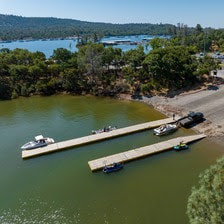 Oroville Recreation Lake Oroville is one of the State Water Project’s premier recreational destinations and one of California’s best fishing spots. The lake provides both warm-water and cold-water fisheries and is a popular destination for bass tournaments. Below the Oroville Dam, the Thermalito Afterbay and the Feather River offer additional excellent fishing opportunities. The marinas at Bidwell Canyon and Lime Saddle are open daily and provide a variety of services including a convenience store, gas, and boat rentals. Upstream migrating fish totals through the Feather River Fish Monitoring Station between Jan. 1 and April 11 are:
Current Lake Operations Lake Oroville is at 881 feet elevation and storage is approximately 3.25 million acre-feet (MAF), which is 92 percent of its total capacity and 123 percent of the historical average. Feather River flows are at 650 cfs through the City of Oroville with 4,350 cfs being released from the Thermalito Afterbay River Outlet (Outlet) for a total Feather River release of 5,000 cfs downstream. On Saturday, total Feather River releases will be reduced to 3,500 cfs while maintaining 650 cfs in the Low Flow Channel. Thermalito Afterbay River Outlet releases will be reduced to 2,850 cfs. DWR continues to assess releases to the Feather River daily. Visitors to Oroville Dam may also notice minor amounts of water flowing from drains built into the emergency spillway, which is normal and expected with the emergency spillway design. The dam and emergency spillway continue to operate as intended. The public can track precipitation, snow, reservoir levels, and more at the California Data Exchange Center. The Lake Oroville gage station is identified as “ORO.” All data as of midnight 4/18/2024. California Department of Water Resources715 P Street Sacramento, CA 95814 Call our general information line at 916-820-8142 or email us at [email protected] 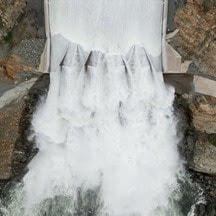 Main Spillway Releases Ongoing With warming temperatures and the mountain snowmelt season underway, the Department of Water Resources (DWR) continues to perform required flood protection releases from Lake Oroville using the main spillway and Hyatt Powerplant. Releases from Lake Oroville during the spring months help maintain storage capacity in the reservoir to capture runoff, while optimizing storage for the benefit of water supply, recreation, and fish and wildlife enhancement. Over the past week, DWR decreased total releases from Lake Oroville to account for reduced inflows into the reservoir. DWR coordinates releases closely with the U.S. Army Corps of Engineers and other water operators and adjusts releases as needed to maintain balance throughout the water system. The information below reflects current reservoir level estimates. Forecasts can change quickly and may affect the estimates provided.
Lake Oroville is the largest storage facility in the State Water Project, providing flood protection while supporting environmental and water delivery needs to 27 million Californians. DWR continues to monitor lake levels, weather forecasts, and mountain snow levels to optimize water storage while meeting environmental requirements and allowing for carryover storage into next year. 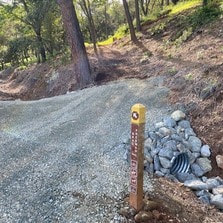 DWR JOB OPPORTUNITIES IN OROVILLE DWR has numerous job opportunities throughout the State. For those looking for positions based in Butte County, DWR is currently hiring engineers. To view more details about the positions, visit CalCareers. BRAD FREEMAN TRAIL REROUTE Heavy rains caused slope failure along a portion of the Brad Freeman Trail near the Hyatt Powerplant, making a quarter mile long trail section unsafe for public recreation. DWR and the California Department of Parks and Recreation (State Parks) assessed impacts to the trail with a decision ultimately made to reroute the trail for continued recreation use. DWR and State Parks opened the newly rerouted trail this week, which now runs along the north side of Oro Powerhouse Road. The trail reroute provides continuous access to the 41-mile-long Brad Freeman Trail loop, offering multi-use recreation for hiking, biking, and equestrians. The nearest access points to this trail segment are the Diversion Pool parking lot off Oro Powerhouse Road and the Upper Overlook Day Use Area on Canyon Drive. DWR, State Parks, and the California Department of Fish and Wildlife (CDFW) maintain over 92 miles of trails in the Oroville area. An interactive map of recreation facilities, including open trails and their permitted uses (hike, bike, horse, multi), is available on DWR’s Lake Oroville Recreation webpage. A paper trail map is available at various locations, including most entrance kiosks and the Lake Oroville Visitor Center. 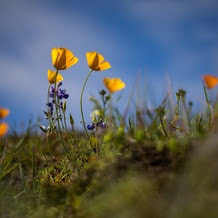 EARTH DAY ACTIVITIES Celebrate Earth Day all April with DWR and the Lake Oroville Visitor Center. Our Visitor Center guides are currently hosting a coloring contest for kids ages 5 to 12. Pick up coloring sheets at the Visitor Center and return them or your own original Earth Day artwork by Wednesday, April 17. Winners will have their art displayed publicly in the Visitor Center’s front lobby. In addition, DWR is hosting an Earth Day chalk art event at the Lake Oroville Visitor Center on Saturday, April 20 from 10 a.m. to 3 p.m. Join our guides in creating beautiful chalk art showcasing your love for our planet and its precious resources. The event is open to all ages and chalk will be provided. Located at 917 Kelly Ridge Rd. in Oroville, the Visitor Center is open daily from 9 a.m. to 5 p.m. Staffed by knowledgeable guides, the Visitor Center features interpretive displays on Oroville Dam, area geology, wildlife and habitat, hydroelectric power, and cultural and historical artifacts. View videos in the theater about the construction of Oroville Dam, walk or hike along nearby trails, and visit the 47-foot-tall observation tower that provides unsurpassed panoramic views of surrounding areas. Free guided tours for school and community groups are available by reservation. Parking and admission to the Visitor Center are free. 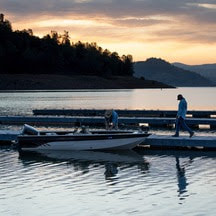 OROVILLE RECREATION Lake Oroville is one of the State Water Project’s premier recreational destinations and one of California’s best fishing spots. The lake provides both warm-water and cold-water fisheries and is a popular destination for bass tournaments. Below the Oroville Dam, the Thermalito Afterbay and the Feather River offer additional excellent fishing opportunities. The marinas at Bidwell Canyon and Lime Saddle are open daily and provide a variety of services including a convenience store, gas, and boat rentals. Upstream migrating fish totals through the Feather River Fish Monitoring Station between Jan. 1 and April 4 are:
CURRENT LAKE OPERATIONS
Lake Oroville is at 875 feet elevation and storage is approximately 3.16 million acre-feet (MAF), which is 89 percent of its total capacity and 122 percent of the historical average. Feather River flows are at 650 cfs through the City of Oroville with 6,350 cfs being released from the Thermalito Afterbay River Outlet (Outlet) for a total Feather River release of 7,000 cfs downstream. DWR continues to assess releases to the Feather River daily. Visitors to Oroville Dam may also notice minor amounts of water flowing from drains built into the emergency spillway, which is normal and expected with the emergency spillway design. The dam and emergency spillway continue to operate as intended. The public can track precipitation, snow, reservoir levels, and more at the California Data Exchange Center. The Lake Oroville gage station is identified as “ORO.” All data as of midnight 4/11/2024. |
Archives
May 2024
Categories
All
|

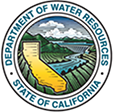
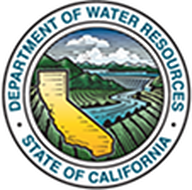
 RSS Feed
RSS Feed